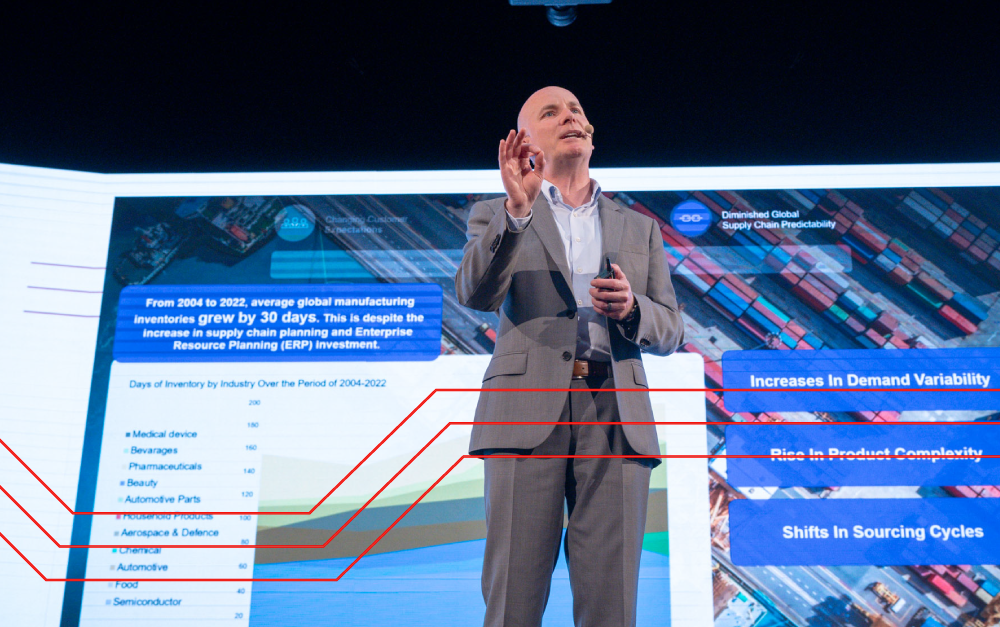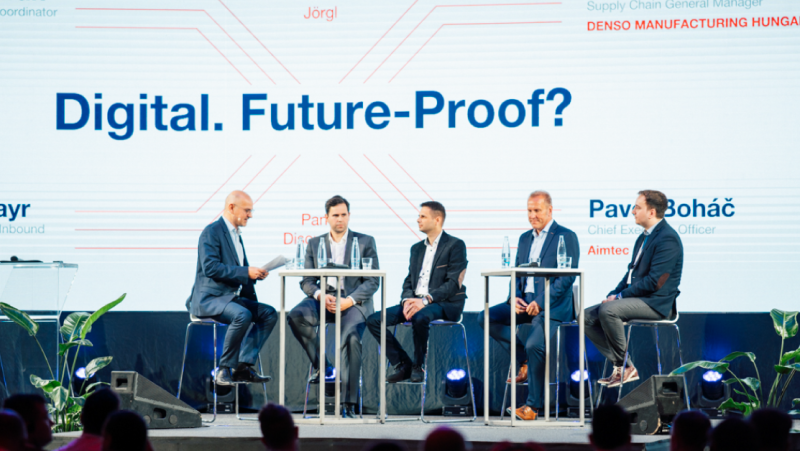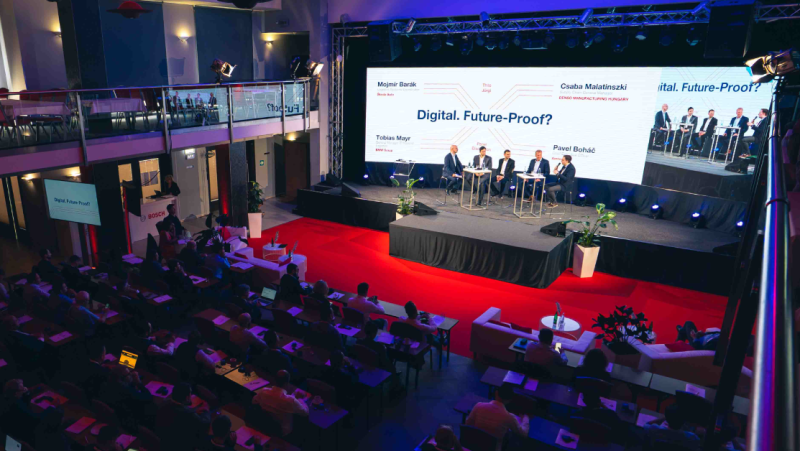TAL 2023: The future belongs to the flexible and resilient, says Zebra CTO Tom Bianculli
- Trends
- Article
By the end of this decade, a number of technological phenomena, such as artificial intelligence and autonomous systems, will influence many already mature markets. Of the greatest importance, however, will be the ability to deliver the right product in the right quantity to the right place at the right time, said Tom Bianculli, Chief Technology Officer at Zebra Technologies, in his presentation at the TAL 2023 conference.
Zebra's chief technology officer elaborated on the above idea by saying that it basically doesn't matter whether it's a tangible item like a car or a service like transportation. But it can equally be applied to the factory worker who, thanks to integrated technologies, will have the right materials and tools to complete his or her tasks in the required time. "Our market will be shaped by the ability to produce and deliver products and services as close to the point of consumption as possible," explained Bianculli.
Word of the Year 2023
It is therefore an example of market disruption, or a disruption of the existing order. As for the automotive market, it has been going through a major disruption for several years now - namely with the transition from internal combustion engines to electric propulsion. This also entails a major change in the supply chain. For example, the demand for silicon as an essential element for semiconductors in electric cars is increasing tenfold. This will change the dynamics and structure of global supply chains. Those who can respond quickly to this "fluid" demand will get a head start.
According to Bianculli, it is not only the agility with which individual market participants respond to these challenges that is important. He considers resilience, i.e. the ability to meet demand despite various external or internal influences to be more important. "Resilience is the word of 2023," Bianculli said in Pilsen.
Three main challenges
According to Bianculli, market players will have to deal with three main challenges. The first is the disappearing predictability of markets in general. "The evolution is moving towards sort of fluid customer expectations," Bianculli said.
The second difficulty is the shortage of labour. According to Bianculli, the global economy will be short of 80 million workers by 2030, up from 23 million today. This will entail huge costs.
The third problem is the increasingly poor ability to predict demand, as shown by the inventory data of various companies over the last 20 years, during which storage times have increased by an average of 30 days. "Despite advanced business planning tools and others, we are moving away from the goal of anticipating demand," Bianculli said.
The future shape of the supply chain
There is a common perception among people that the supply chain starts at one place and ends somewhere else. According to Bianculli, this vision is outdated. "It's more of a cycle, everything is in motion, everything is evolving. What is static is useless," Bianculli said. All of the above challenges need to be adequately addressed. For example, Bianculli says the US company Target has introduced a new term "flow center" to replace the existing warehouses and distribution centres due to the change in real estate. "It includes an order management system, a forecasting system that looks at historical demand, and also includes current weather data in addition to monitoring social media. It all flows through this center and we need to strengthen the resilience of supply chains to withstand these phenomena," explained Bianculli.
A fundamental aspect of the functionality of this flow centre and future supply chains in general is the real-time visibility of goods and assets. “Without this visibility, supply chains will not work. Have a production schedule for days, weeks or even hours? It doesn’t work. We need an ever-changing system in which we can see demand, our inventory, people, processes, vehicles. I need to see all of this in real time and optimize my systems accordingly," Bianculli presented his vision.
So now is the time to start connecting workers, workflows, robots, and the data flow code must be understandable to all participants.
Digital native
None of the above is achievable at the snap of a finger. But the basic prerequisite is to tune our mindset. According to Bianculli, a logistics architecture built on "established orders" cannot stand up to the demands of today. On the contrary, we need to adapt the "digital native" mindset and ask why everything that can be digitized and automated is not yet digitized and automated. This is the only way to succeed in the new economy, which is now known as "on demand". According to Bianculli Those who fail to do so will be "eaten".
What else was said in the presentation by Zebra Technologies CTO Tom Bianculli? Watch a recording of his presentation at the Trends in Automotive Logistics - TAL 2023 conference.
Share article
Top stories from logistics, production and IT.
Subscribe to Aimtec Insights
By registering, you agree to the processing of your personal data by Aimtec as described in the Privacy policy.
Get top stories and articles
from Logistics, Production and IT.
Subscribe to Aimtec Insights
By registering, you agree to the processing of your personal data by Aimtec as described in the Privacy policy.








